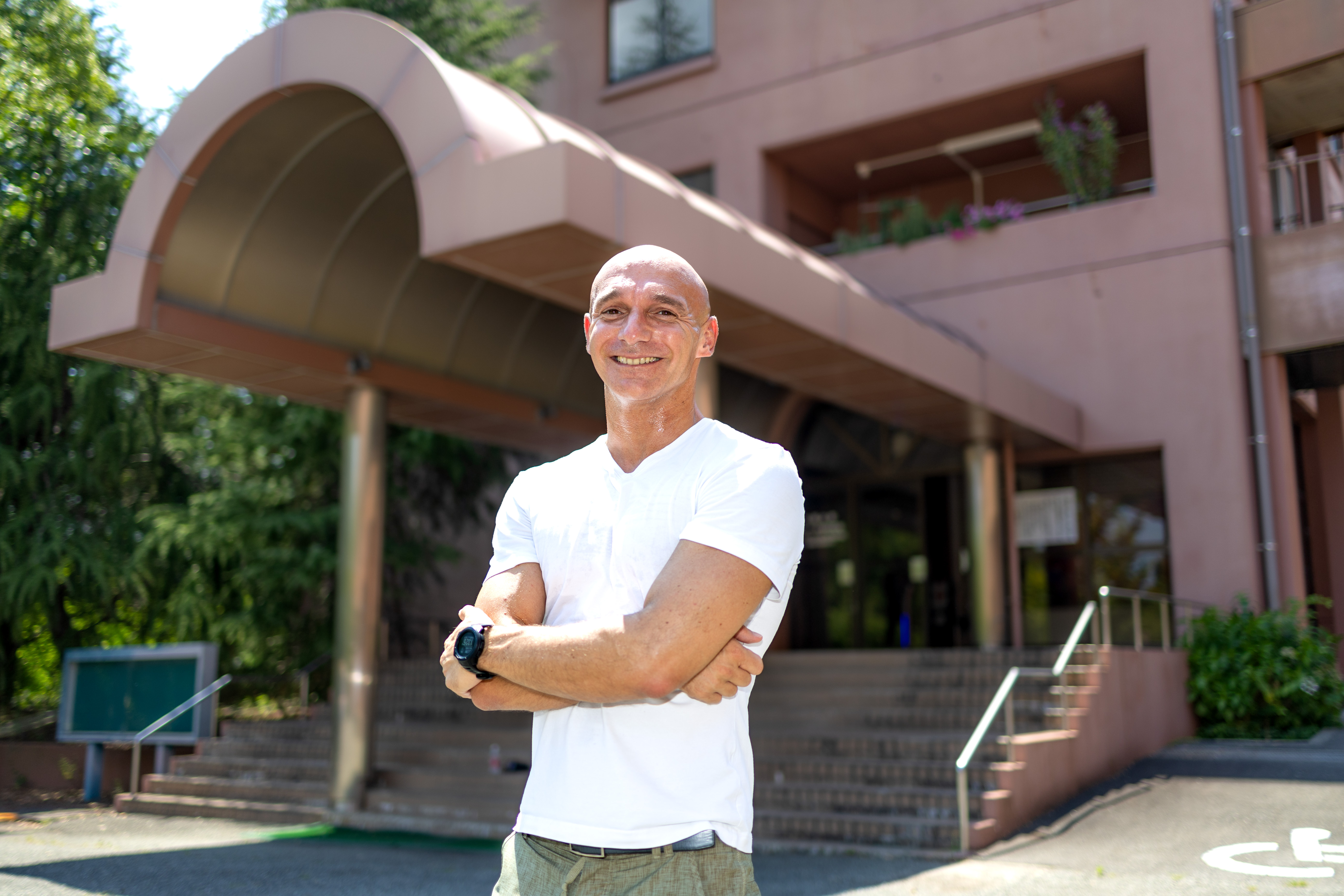
Dr. Alessio Morace, Assistant Professor, Institute of Laser Engineering
"It’s all starting to come together: Laser-induced nuclear fusion for low-carbon, low-radiation energy production"
Dr. Alessio Morace is an experimental physicist who holds a Ph.D. from the University of Milan in Italy. He did most of his doctoral research in the United States as a visiting research scholar at the University of California San Diego and the Lawrence Livermore National Laboratory. During this time, he had the opportunity to visit the Institute of Laser Engineering (ILE) at Osaka University to do research as an exchange student and co-authored a joint paper. After obtaining his PhD in 2013, he returned to ILE as a postdoctoral researcher, where he was given the freedom to conduct experiments using a fully-functioning, kilojoule-class picosecond laser, known as LFEX (Laser for Fast Ignition Experiment), the most powerful laser in the world at the time that is still functioning even now. He was then promoted to specially appointed assistant professor in 2015, to non-tenured assistant professor in 2016, and to tenured assistant professor in 2022.
Dr. Morace’s research is centered on inertial confinement fusion, an approach to induce nuclear fusion in which targets filled with thermonuclear fuel, in this case deuterium and tritium (the isotopes of hydrogen), are compressed and heated. Nuclear fusion is considered the holy grail of clean energy because it converts hydrogen isotopes, which are abundant everywhere on earth, into helium, a noble gas that does not cause environmental problems. Dr. Morace uses two types of lasers available at the ILE to induce inertial confinement. The first is “Gekko,” a nanosecond laser facility used to generate extremely high pressure with a “good enough” distribution to the sample intended for nuclear fusion, which in turn converts the sample state to laser-induced plasma in a high density state. The highly compressed system is then further irradiated with the picosecond laser LFEX to heat the plasma to fusion temperature, which is about 10 million Kelvin (much higher than the temperature of the sun’s core). Dr. Morace and his colleagues are working to develop a scheme to achieve fusion temperature using ILE’s laser facilities. A much larger laser facility in the United States has achieved fusion temperature using a different method called “indirect drive”, the preferred approach for weapon-related research, but Dr. Morace and his colleagues prefer the direct radiation-compression-ignition approach, which is less delicate, more reliable and is not of direct interest for weapon development. At this moment, he is focusing on the ignition aspect of the process, particularly attempting to increase LFEX laser intensity to generate hybrid ion-electron beams from the interaction of the target matter with the laser. His idea is to use plasma mirrors to amplify the LFEX laser even further, which he thinks will probably take a few years to achieve.

When asked how he feels about the diversity and inclusion efforts of Osaka University and Japanese universities in general, Dr. Morace lauded the efforts carried out by the university, which have led to significant progress in recent years. However, he feels that there is still room for improvement. He touched upon the unspoken expectation for international faculty members to “fit in,” which, although this makes it easier for them to do their work, tends to hinder the influx of fresh ideas and diverse ways of thinking. He feels that the university could benefit from an effective program that sends its own talent abroad to open their perspectives on the internationalization of university staff. He also supports sending Japanese students overseas to broaden their horizons and develop personal and professional networks as early as possible. He also feels that the university may need to supplement the nominal amount of each scholarship for international students to alleviate their financial worry. With the changing landscape of international exchange, he agrees that now is the time to rethink and rediscover the university’s internationalization strategy.
Text: Clement Angkawidjaja/Edit: Christopher Bubb